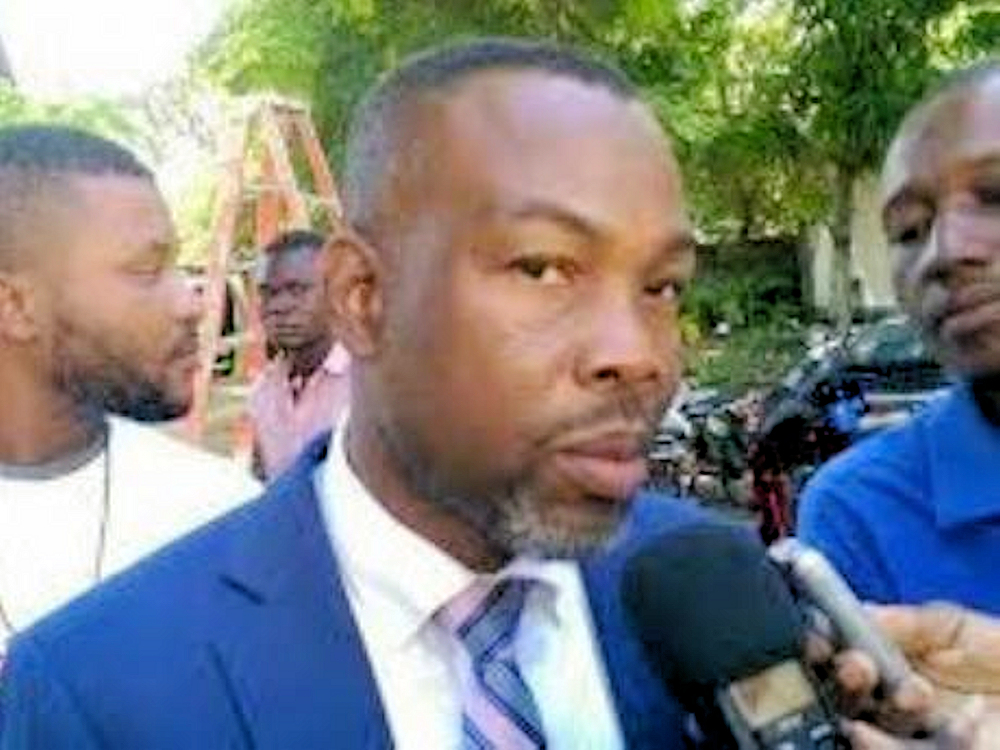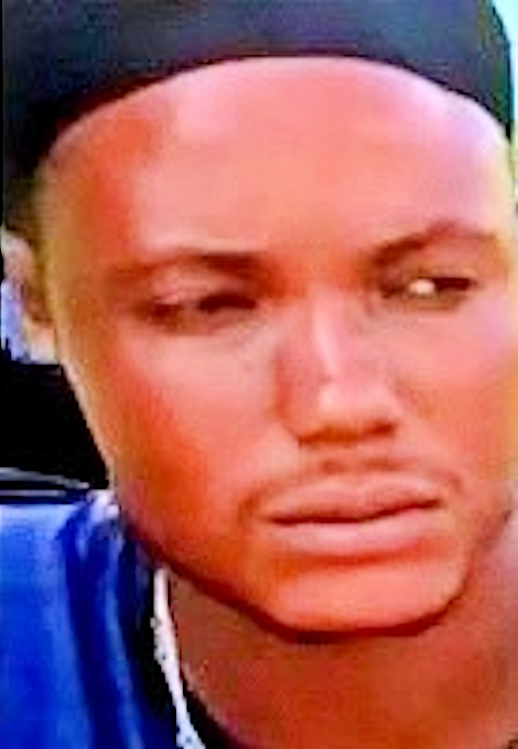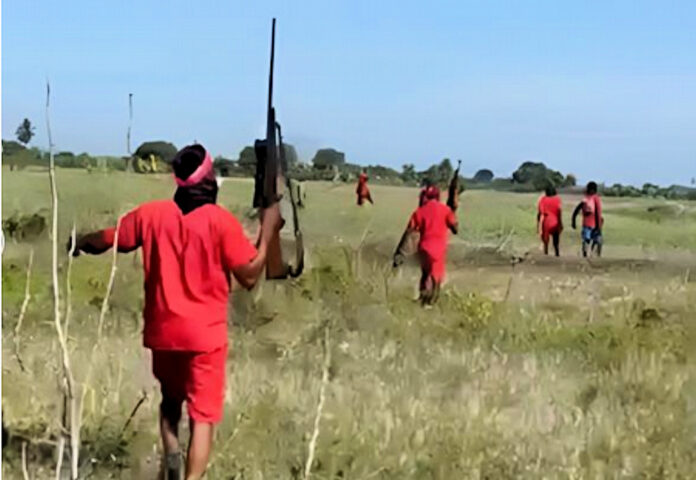In February 2004, the U.S. government’s campaign to overthrow President Jean-Bertrand Aristide’s elected government was in full swing.
One of the key battlegrounds was the port town of St. Marc, about 55 miles northwest of Port-au-Prince. The town, through which the main highway to Haiti’s north (Route 1) passes, was home to two armed groups: Bale Wouze (Sweep with Water) and Ramicos (St. Marc’s Assembly of Principled Militants). The former group supported Aristide’s government, the latter bitterly opposed it.
On Jan. 1, 2004, celebrants, activists, and journalists who defied Washington’s worldwide boycott of Haiti’s bicentennial festivities (South Africa’s President Thabo Mbeki was the only head of state to attend) boarded many buses and vans to travel to Gonaïves. There, Aristide was to make a speech where founding father Jean-Jacques Dessalines had declared Haiti’s independence on the first day of 1804. But the vehicle caravan was turned back by gunfire, in large part coming from Ramicos militants in and around St. Marc.

Ramicos skirmished with Bale Wouze and Aristide government forces repeatedly in the following weeks. As U.S.-supported armed rebels began to make advances across Haiti’s north and take over Gonaïves, the fighting between Bale Wouze and Ramicos intensified, culminating in a very bloody series of battles beginning on Feb. 11, 2004.
Washington and pro-coup political and human rights groups dubbed the ensuing violence, in which dozens were killed over many days, the “La Scierie Massacre,” blaming it all on Bale Wouze. However, honest and disinterested human rights investigators eventually rejected the claims of a massacre, recognizing the events for what they were: a fierce and bloody political struggle between two armed groups.
Two decades later, Haiti again finds itself at a decisive political crossroads, with politically opposed armed groups battling each other. Once again, the violence is being blamed on one side and called a “massacre.”
Witness the following Reuters headline from last week: “Haitian gang slaughters at least 70 people as thousands flee.” Or that of the New York Times: “As a Massacre Unfolded, a Frantic Call: ‘Send for Help’”.
In the Artibonite Valley, which begins about six miles north of St. Marc, two armed groups have been facing off. They are Gran Grif (Big Claws) and Kowalisyon (The Coalition).
Gran Grif is loosely affiliated with the Viv Ansanm (Live Together) coalition of armed groups, led by former cop Jimmy “Barbecue” Cherizier, which drove former Haitian Prime Minister Ariel Henry from power on Feb. 29, 2024. Kowalisyon works in concert with the Haitian National Police (PNH) and the government of de facto Prime Minister Garry Conille, which Washington installed via an equally unelected Transitional Presidential Council (CPT) after Henry’s ouster.
Both armed groups were initially founded by Prophane Victor, who served as a deputy for the Artibonite Valley from 2016 to 2020 for the Bouclier Party, a close ally of the then ruling Haitian Bald-Headed Party (PHTK), which is now an integral part of Washington’s new puppet government.
Some years ago, Prophane lost control of Gran Grif and then helped form, fund, and arm Kowalisyon to fight and destroy it. The PNH and Kowalisyon killed Gran Grif’s original leader Odma Louissaint in January 2021, but Luckson Elan soon replaced him.
Gran Grif used to fund its activities through kidnapping and other crimes. But since February, purportedly to comply with Cherizier’s calls for Viv Ansanm allies to put an end to any criminal activity, Gran Grif apparently stopped kidnapping to only rely on taxing vehicular traffic at Kafou Paye on Route 1 in the Artibonite Valley. (Many Haitians deeply resent and fear the levies armed groups impose on roads.)
Haiti again finds itself at a decisive political crossroads, with politically opposed armed groups battling each other.
However, Kowalisyon, with PNH backing, began diverting traffic in Pont Sondé, the southern entrance to the Artibonite. They thereby cut off the tolls that Gran Grif had been collecting in the Artibonite’s Kafou Paye.
Meanwhile, Luckson and Cherizier argue that Kowalisyon, with PNH help, has seized, beaten, tortured, killed, or disappeared many people – including women and children – who were from Gran Grif ‘s stronghold in Savien when they passed through Pont Sondé on their way south.
Recently, on a livestream followed by tens of thousands that Cherizier holds almost daily on TikTok, Luckson pleaded with Kowalisyon to make peace and bury the hatchet, to stop targeting his people and diverting traffic in Pont Sondé.
“We don’t want to fight with you,” Luckson said. “Let us learn to live together.”
However, Kowalisyon was unmoved by the appeals and even invited a Gran Grif attack, confident in the power of the large PNH tanks which back up its soldiers.
As a result, Gran Grif launched a surprise attack on Pont Sondé during the pre-dawn hours of Thu., Oct. 3, when the PNH armored vehicles were not deployed.
Some press reports put the death toll at 70, likely drawing from the report of the National Human Rights Defense Network (RNDDH), a National Endowment for Democracy (NED)-funded “human rights” outfit. The Kowalisyon armed group, taken off-guard, suffered severe losses, sources told us.
In short, there are two camps now battling for Haiti’s future. On one side is Washington, with its CPT, Garry Conille, the PNH, its foreign occupation troops of the Multinational Security Support (MSS) mission, and armed groups like Kowalisyon, who act as PNH auxiliaries.
On the other side is Haiti’s larger anti-imperialist movement, which opposes all foreign military intervention in Haiti, now joined, ostensibly, by the armed groups of the Viv Ansanm alliance.
Many in the anti-imperialist movement remain leery of or even reject the Viv Ansanm armed groups, several of which, like Gran Grif, were engaged in criminal activities and fierce fighting with Cherizier’s G9 anti-crime alliance. Cherizier is attempting to reform his newfound allies with a higher consciousness and ideology, but it remains unclear how successful his efforts have been or will be.

Luckson Elan appears to be no angel. He stands accused of many crimes including nine mass kidnappings (including 157 people), extrajudicial killings, rape, robbery, and the hijacking of trucks.
The Gran Grif attack on Pont Sondé is certainly deplorable, given that many innocent people were killed. The New York Times reports that 88 people died, claiming that only 10 of them were “gang” member, without specifying which “gang.”
Reports say that some 6,300 people fled Pont Sondé after the attack.
It is also deplorable, if Elan’s charges are to be believed, that Kowalisyon has killed and disappeared many people from the Savien area.
Meanwhile, the mainstream media – Haitian, North American, and European – continue to vilify the Viv Ansanm coalition, attributing to it crimes committed by opportunists and imposters posing as Viv Ansanm militants. Cherizier recently showed the pictures on his channel of two Haitians operating near the Haitian/Dominican border who alledgedly rob and kidnap Haitians crossing, then blame it on a Viv Ansanm armed group.
In his recent broadcasts, Cherizier has called on his audience to embrace four basic principles to stop the violence and bring peace and security to Haiti, which he says is “on the brink of a civil war.” They are: reconciliation, forgiveness (pardon), dialogue, and living together.
His recently launched TikTok channel now has 127,100 followers, and most of his daily live discussions have an average of 5,000 people tuned in for hour after hour.
“The biggest cancers eating Haiti are the U.S., France, and Canada,” Cherizier said in one of his recent live broadcasts. “They work together with the corrupt oligarchs, politicians, journalists, and human rights groups to maintain the unbearable status quo, where people live in misery. We Haitians must reconcile among ourselves so we can once again take control of our nation, like Dessalines’ true children, and make history.”











[…] et de l’impunité en Haïti, l’aggravation de l’insécurité avec les dernières provoked violence in Pont Sondé dans l’Artibonite, et l’absence totale d’organisme gouvernemental de contrôle. […]
[…] the perpetuation of corruption and impunity in Haiti, the worsening of insecurity with the latest provoked violence in Pont Sondé in the Artibonite, and the total absence of a government control body. How can Conille place an […]
[…] the “self-defense” committees that we see in towns like Pont Sondé and Arcahaie, as well as in neighborhoods like Solino, again being funded by the bourgeoisie and […]
[…] Ansanm et ses alliés ont eu plusieurs confrontations avec des groupes armés dans des villes comme Pont Sondé et Arcahaie, au nord de la capitale, Léogâne, au sud de la capitale, et dans plusieurs quartiers […]
[…] Ansanm et ses alliés ont eu plusieurs confrontations avec des groupes armés dans des villes comme Pont Sondé et Arcahaie, au nord de la capitale, Léogâne, au sud de la capitale, et dans plusieurs quartiers […]
[…] Berichte über Menschenrechtsverletzungen veröffentlicht, darunter Berichte über Massaker in La Scierie (2004, (damals noch unter dem Namen NCHR-Haiti), La Saline (2018) und Delmas 32 […]